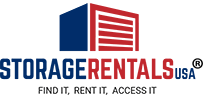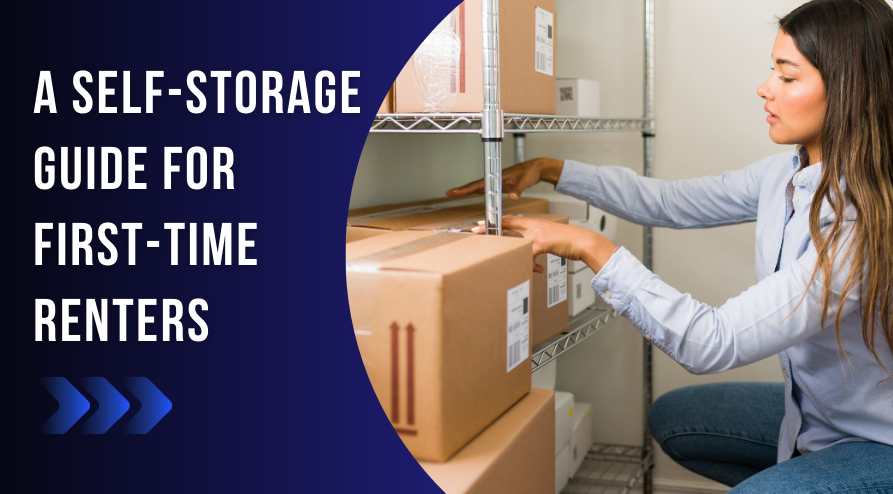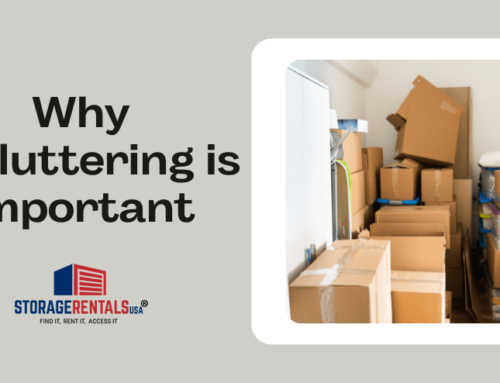It’s likely not your first time hearing the term “self-storage”. You’ve probably driven past a self storage unit at least once, but if you’ve never actually rented one, you may not be sure what it’s all about.
Self-storage units are a great option for storing all of your extra stuff, whether you’re moving, starting a business, or just trying to declutter your home. If you’re in need of this extra space but aren’t sure where to begin, you may be feeling a bit overwhelmed by the process. At Storage Rentals USA, storage is what we do, so why not listen to a few tips from the experts?
We’ve put together an easy to use guide that covers everything you need to know about self storage, from the different types of storage units available, to the services and amenities that storage facilities offer. We’ll provide you with valuable tips and tricks to make the process stress-free, including how to choose the right size unit, how to properly pack and organize your belongings, and how to secure your unit.
With our help, you can rest assured that your storage rental experience is easy, convenient, and secure. If you’re considering renting a storage unit for the first time, be sure to read our storage guide to get started on finding the perfect storage solution for you.
What To Look For in a Self-Storage Unit
You need to find the perfect self storage unit that is best suited to your needs, so it’s important to consider which amenities you think are most essential. For example, if you’re storing sensitive items, climate-controlled units can prevent damage from extreme temperatures and moisture. If, on the other hand, convenience is more important to you, storage units with drive-up access allow you to easily load and unload items from your car right next to the unit.
If you require late night or early morning access, you need to find out upfront what hours the storage rental facility will allow you access to your unit. You should choose a facility with extended access hours or 24-hour access if this is important to you.
Before choosing a storage unit, you need to have a good idea of what and how much you will be storing. This will help you determine the right size unit, which can range from a small walk-in closet to one that holds the contents of a four-to-five-bedroom house. Don’t forget to consider vertical space to maximize your storage capacity.
What Does Renting a Storage Until Entail?
The process for renting a storage unit is pretty straightforward. After finding a suitable storage facility, you sign a contract for a specific amount of time and select a unit size. Storage units are rented on a month-to-month basis, although some companies may have a minimum rental period.
The policies and procedures for each storage company may differ, but you are only charged for the duration of the rental agreement. It’s important to note that living in a storage unit is prohibited by state and federal housing laws, as is conducting business from the unit. While some storage facilities allow musical rehearsals, they may have restrictions on noise levels and access to electricity.
Why Should You Rent Self-Storage?
Self-storage units are rented for a variety of reasons beyond just moving or decluttering. Some common reasons include:
- Seasonal storage: Storing holiday decorations, seasonal gear, and lawn equipment during the off-season.
- Temporary storage during a move: In case your new home isn’t ready yet, a rental storage unit can keep your belongings safe until you can move in.
- Need for more space at home: If you’re downsizing or a family member moves in and you need more space, you can store your belongings instead of parting with them.
- House renovation: To protect your belongings and clear space during renovations, you can store furniture and other items in a storage unit.
- College storage: Students who don’t want to transport their dorm room belongings home during summer break can rent a storage unit near campus.
- Military service: Members of the military can use storage units while deployed.
- Vehicle storage: If you don’t have space to store your boat, RV, car or motorcycle at home, you can store it at a storage facility.
Tips and Tricks For Moving Belongings Into Self-Storage
Make sure to check the weather forecast for the day you plan to move your items into storage. Hot or rainy days can make the move-in process uncomfortable and frustrating, so aim for a day with ideal weather conditions. If that’s not possible, consider choosing a facility with a covered loading bay.
It’s important to have ample self storage supplies, such as boxes, tape, and bubble wrap. It’s better to have too many than to run out halfway through packing. You might also need garment racks, hangers, and snacks and water for move-in day.
Create a storage plan to help ensure you don’t miss any items and know exactly where everything is in the unit. Your plan should include the items you’re storing, the location of important items, which items will be easily accessible, and the address and access code of the storage facility. Be sure to label your boxes and group similar items together for easy organization.
Storage Rentals USA
StorageRentals USA offers a convenient way for users to search and compare storage businesses based on rates, site security, location, and other amenities. Don’t waste time searching for a storage business only to find that their storage sizes are insufficient or their service is underwhelming.
With StorageRentals USA, you can easily find the ideal self-storage business for you anywhere in the nation. Simply enter your desired state, zip code, and mileage, and our search engine will do the rest. Once you’ve selected a storage business, renting a storage unit is quick and easy. You can sign your lease agreement, add insurance if necessary, receive your gate code for access, and move in whenever you’re ready, all from the comfort of your own home. StorageRentals USA allows you to rent a self-storage unit from anywhere and at any time!

 Open 24 hours
Open 24 hours






Leave A Comment